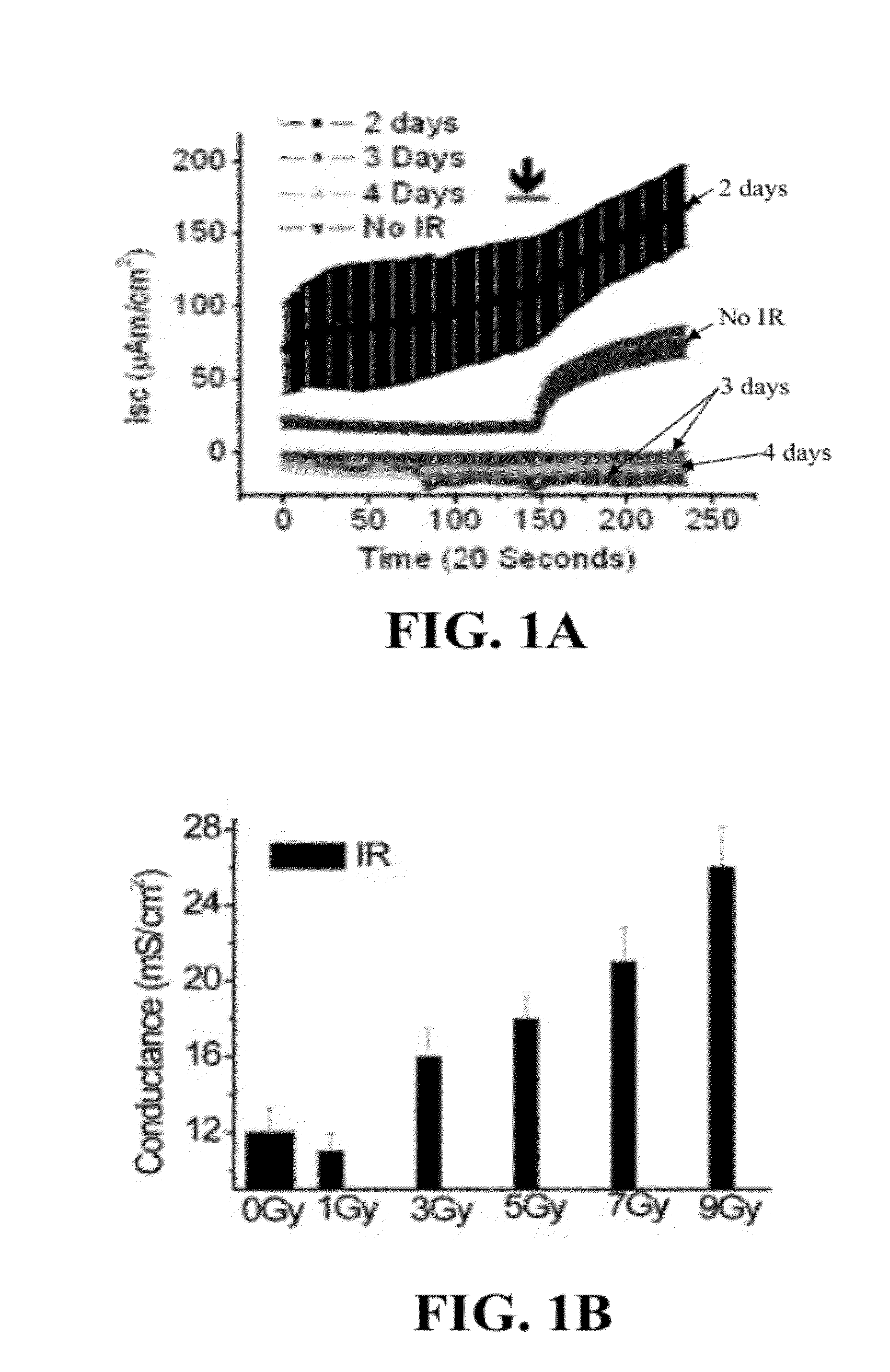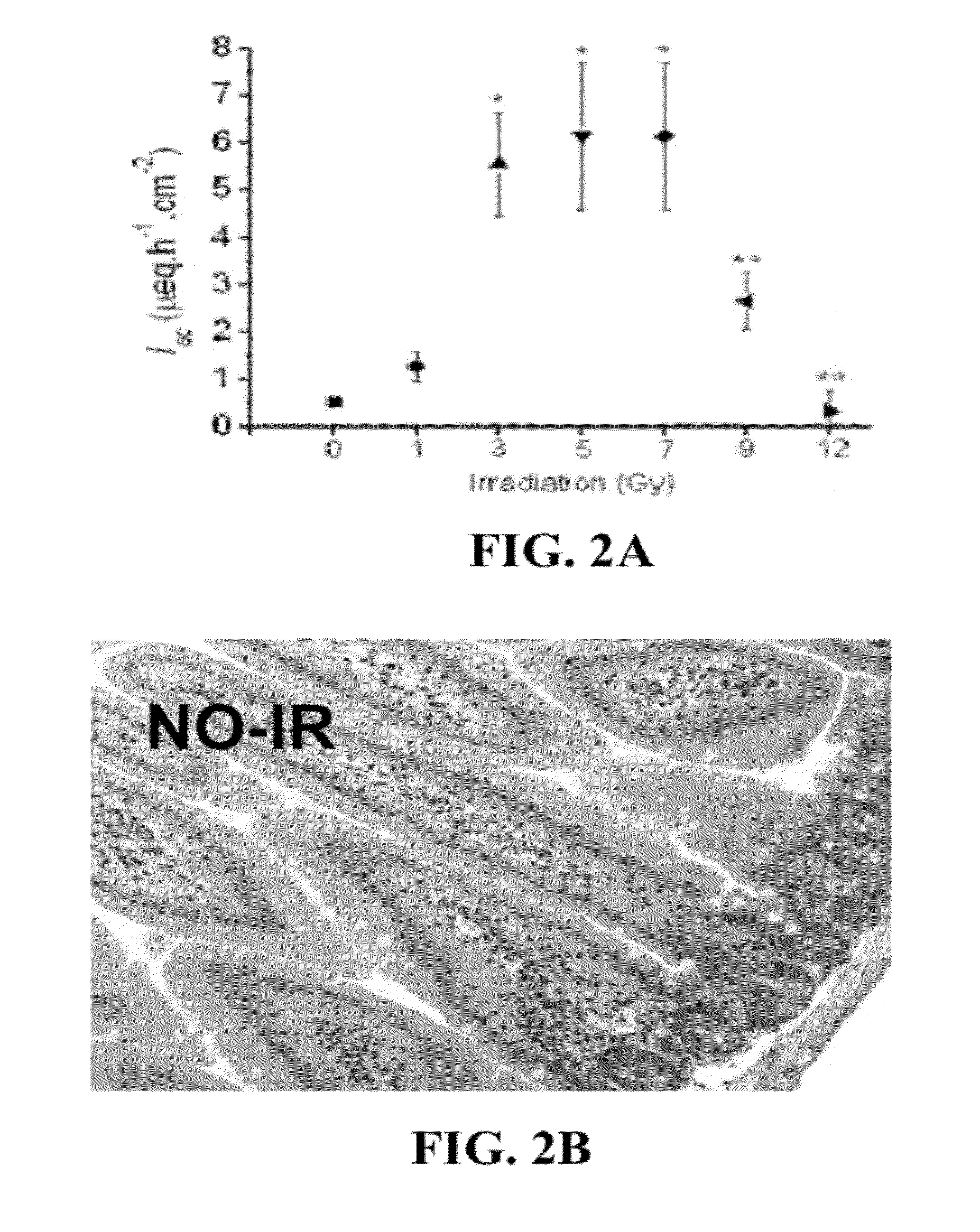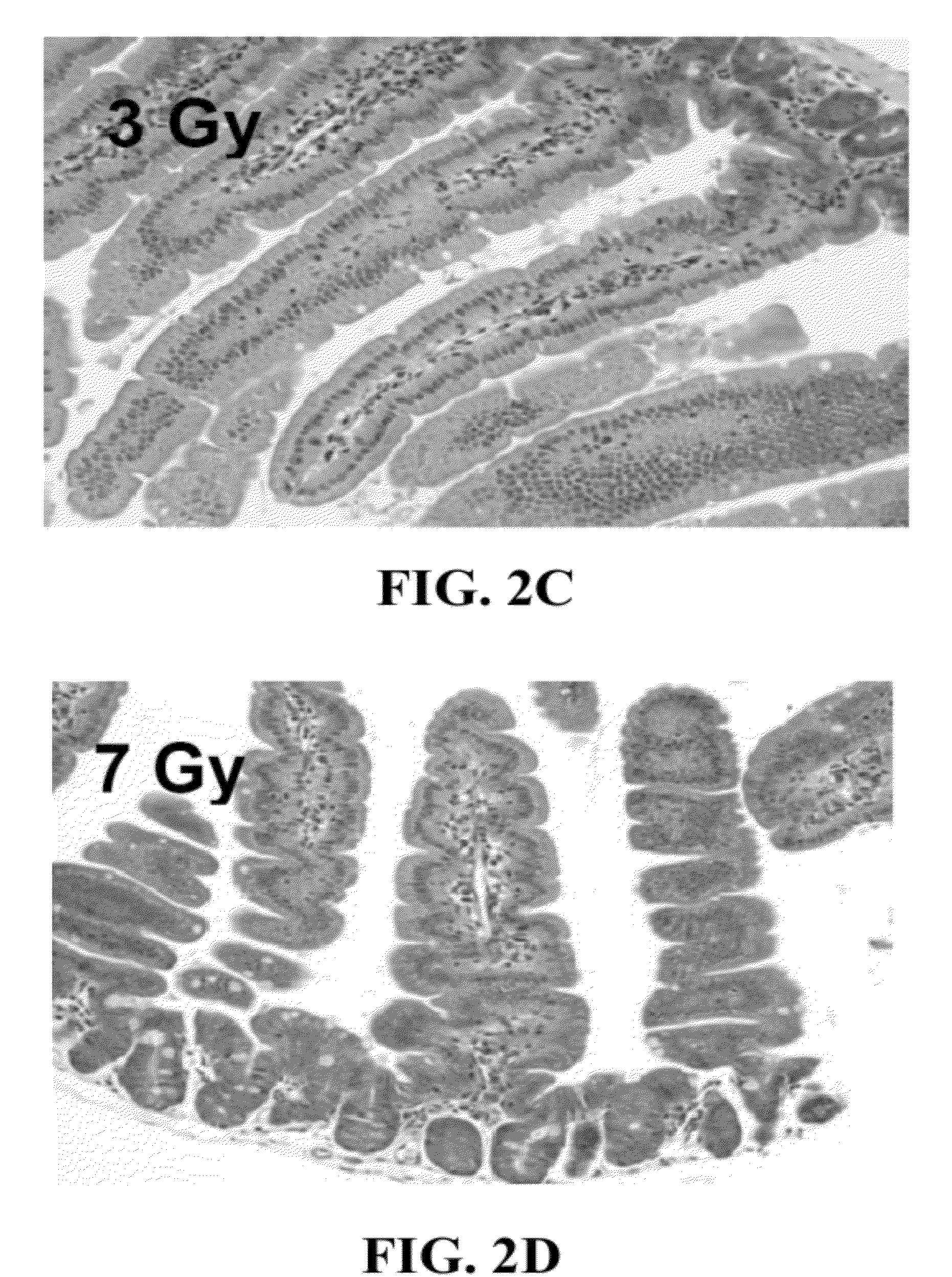Materials and Methods for Improving Gastrointestinal Function
a technology of gastrointestinal tract and materials, applied in the direction of drug compositions, dispersed delivery, peptide/protein ingredients, etc., can solve the problems of adversely affecting patient recovery in the course of cancer therapy, irradiation is particularly destructive to the villous epithelium, and severe damage to the lining of the gastrointestinal tra
- Summary
- Abstract
- Description
- Claims
- Application Information
AI Technical Summary
Benefits of technology
Problems solved by technology
Method used
Image
Examples
example 1
Irradiation Increases Net Anion Secretion
[0151]This Example shows that irradiation increases net anion secretion, and causes greater loss of villous epithelial cells as compared to crypt cells. Specifically, small intestine epithelial tissues were obtained from mice that received 12 Gy irradiation and anion secretion was examined using Ussing chamber studies. Transepithelial Isc, an indicator of anion secretion, was measured on day 1, 2, 3, and 4.
[0152]As shown in FIG. 1A, maximal increase in transepithelial Isc was observed at 48 hr post irradiation, as compared to non-IR exposed tissues and IR-exposed tissues 24 and 72 hrs post irradiation (FIG. 1A). This significant increase in Isc at the end of 48 hrs indicates that irradiation disrupts the fine balance between absorption and secretion. In comparison, Isc recorded at the end of 48 hrs and 72 hrs is lower than that of non-IR mice tissues.
[0153]Histopathology sections also showed a greater loss of villous epithelial cells as compa...
example 2
Irradiation Causes a Dose-Dependent Increase in Short Circuit Current (Isc)
[0156]This Example reveals that irradiation causes a dose-dependent increase in short circuit current, indicating increased electrogenic anion secretion. Briefly, mice that received 0, 1, 3, 5, 7, 9 or 12 Gy irradiation were sacrificed on day 4. FIG. 2 showed significant increase in Isc in mice tissues irradiated at 3, 5 & 7 Gy, as compared to that of those irradiated at 0 and 1 Gy (psc was observed in mice tissues irradiated at 9 & 12 Gy (*psc and minimal histopathological changes.
[0157]In addition, irradiation causes changes in Isc over time. Of mice sacrificed on 0, 1, 2, 3, 4, 5, 6 or 7 days, the highest increase in was observed on day 5 and 6 post-IR (FIG. 3A). To determine the maximal increase in Isc as a function of time, mice were irradiated at 3 Gy and sacrificed on 0, 1, 2, 3, 4, 5, 6, 7, 9, 11, and 14 days to record electrical parameters. Kruskal-Wallis (Psc on day 6 post-irradiation.
[0158]As shown...
example 3
Decrease in Na+ and Cl− Absorption
[0160]This Example shows that irradiation decreases Na+ and Cl− absorption. As shown in Table 2, Ussing chamber flux studies using 22Na-substitution revealed that there is a net absorption of Na+ in non-IR (0 Gy) mice (Table 2), as the mucosal to serosal flux (Jms) outperforms serosa to mucosa flux (Jsm). Irradiation decreases Jms in a dose-dependent manner, and results in decreased net Na+ absorption (JNetNa). Jsm far exceeds Jms at doses 7 and 9 Gy, causing net secretion. In addition, mice stool samples became loose or poorly formed at high dose irradiation, further evidencing decreased absorption and increased secretion of electrolytes. Similarly, net Cl− absorption also decreased as IR doses increased. Net Cl− secretion was observed at 9 Gy. Decrease in Cl− absorption was due to decrease in JmsCl−.
TABLE 2Unidirectional and net flux of Na+ and Cl− (JNet = Jms-Jsm)
PUM
| Property | Measurement | Unit |
|---|---|---|
| Fraction | aaaaa | aaaaa |
| Fraction | aaaaa | aaaaa |
| Time | aaaaa | aaaaa |
Abstract
Description
Claims
Application Information
 Login to View More
Login to View More - R&D
- Intellectual Property
- Life Sciences
- Materials
- Tech Scout
- Unparalleled Data Quality
- Higher Quality Content
- 60% Fewer Hallucinations
Browse by: Latest US Patents, China's latest patents, Technical Efficacy Thesaurus, Application Domain, Technology Topic, Popular Technical Reports.
© 2025 PatSnap. All rights reserved.Legal|Privacy policy|Modern Slavery Act Transparency Statement|Sitemap|About US| Contact US: help@patsnap.com



